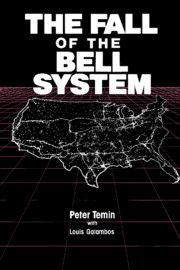Book contents
8 - Reflections
Published online by Cambridge University Press: 06 January 2010
Summary
The process of change
The Bell System ceased to exist on December 31, 1983. On January 1, 1984, a new, smaller AT&T and seven new regional telephone holding companies made their debut. The world went on. Telephones worked, and the FCC and state commissions still regulated them. Congress was still interested in local telephone rates. To the telephone user, continuity seemed far more apparent than change.
But, of course, the divestiture was a momentous change. Occurring at a time of marked shifts in the relationship of government and business, it climaxed the largest single corporate reorganization in history. It spawned eight new companies that would evolve consonant with the Modification of Final Judgment, with their prior histories, and with the shifting nature of this complex industry. Divestiture greatly accelerated the painful movement toward competitive telephone pricing. It set up a contest between the FCC and Judge Greene for control of the changing telecommunications industry. The question of how soon or even whether the industry would approach the conditions envisaged by Brown and Baxter as they forged their final agreement in the early days of 1982 would not be answered for many years.
How had this dramatic change come about? The preceding pages have detailed the particular events leading up to the Modification of Final Judgment. The time has now come to stand back and survey the entire process, to ask what deeper meaning this story has for the United States, for business-government relations, and for the history of this country.
- Type
- Chapter
- Information
- The Fall of the Bell SystemA Study in Prices and Politics, pp. 336 - 366Publisher: Cambridge University PressPrint publication year: 1987
- 1
- Cited by



